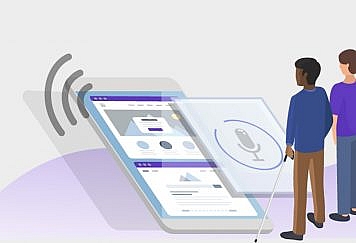As nearly every aspect of modern life becomes digitized, e-commerce has evolved into a completely entrenched element of global retail. Forecasters predict US retail e-commerce sales will grow 13.7 percent to reach $908.73 billion in 2021. And on a global scale, global e-retail has surpassed $4.2 trillion, according to 2020 figures. This is all great news for any business looking to launch a cross-border e-commerce business strategy.
With the e-commerce market only set to soar as far as anyone can predict, now is an optimal moment for online retailers to go international. But what are the steps to take, flags to look out for, and must-dos to be successful? Those components of your cross-border e-commerce strategy will differ depending on the size of your business. Below, we walk through the essential items to add to your checklist when launching your international strategy – no matter if you’re small, mid-sized, or enterprise-level.
Localize Your Message And Marketing
Every size business will need to do its due diligence and research target buyers in their target regions before solidifying successful messaging and marketing material. Conduct exercises to understand more about what your international customers will expect from your business. Do they expect one-day shipping? How do they prefer to see prices rounded? What types of products are most popular and culturally relevant? What are their payment preferences? These are just a few of the questions to ask and answer before launching your cross-border strategy.
Once you’ve got the answers, a robust software platform can help you personalize the experience your customers have on your website, so your data gets put to good use. E-commerce software helps to localize your site by country or region, so users have a local feel when shopping from you. Technology can even help you launch local promotions and ensure shoppers aren’t alienated by details like payment options that are unfamiliar to them. An advanced platform can also enable merchants to A/B test different factors across the customer journey to see if consumer preferences change over time.
Make Sure You Consider Duties, Taxes, And Shipping
International shipping and logistics can be a huge thorn in the side of any business going global. Every country – and even specific regions within certain countries – have their own rules about which products can be sold, taxes and duties will apply to those items, total landed costs, and how long delivery will take. No matter what size business you’re operating, you’ll need to take stock of the fees associated with shipping to your target markets.
Opting for a technology solution that simplifies these factors is a smart option. Cross-border software solutions can offer machine learning to drive real-time calculations of taxes and duties and offer complete control over shipping options offered to shoppers in each market. A bonus is a solution that can also offer a shipping carrier network to support direct shipping so that orders don’t pass through a costly cross-dock and can be delivered to the end customer within timely delivery windows. Automation through technology is the best way to scale the global business and future-proof the business as global commerce evolves.
Aim For Both Scalability Through Technology
While businesses of every size want to scale for growth, some find it easier than others. The ones that can do so with greater facilities usually leverage technology correctly to do so. Successful international e-retailers are using software solutions such as software as a service (SaaS) platforms to automate complicated processes, leverage best practices, and provide support along the way. But for any technology to be a true panacea, it must integrate easily into a brand’s tech stack, no matter how complicated. Furthermore, end-to-end solutions are more desirable than point solutions as they can solve challenges across the entire customer journey, removing the need for maintaining and managing multiple systems. Using one solution that can be accessed through an easy-to-use console, offers online retailers of all sizes the ability to reduce the time and resources involved in integrating and managing multiple systems to provide local experiences for customers in different markets.
Put simply, SaaS platforms can help small businesses ensure that their resources are used efficiently, mid-size businesses work competitively in new markets, and enterprise brands operate in long-tail markets that may have been impossible previously.
Localize Your Message And Marketing
Every size business will need to do its due diligence and research target buyers in their target regions before solidifying successful messaging and marketing material. Conduct exercises to understand more about what your international customers will expect from your business. Do they expect one-day shipping? How do they prefer to see prices rounded? What types of products are most popular and culturally relevant? What are their payment preferences? These are just a few of the questions to ask and answer before launching your cross-border strategy.
Once you’ve got the answers, a robust software platform can help you personalize the experience your customers have on your website, so your data gets put to good use. E-commerce software helps to localize your site by country or region, so users have a local feel when shopping from you. Technology can even help you launch local promotions and ensure shoppers aren’t alienated by details like payment options that are unfamiliar to them. An advanced platform can also enable merchants to A/B test different factors across the customer journey to see if consumer preferences change over time.
Consider Your Resources For Going Cross-border
Expanding your business obviously requires more hands on deck, but evaluate if your company has the cash and resources to make the leap to international retail effectively. Do you have enough resources to handle any customer issues in these new regions? Do you need more folks to keep up with research so you can successfully market to the right customers?
This is where software plays yet another role. The right SaaS platform can help you automate tasks that would otherwise need to go to humans, streamline processes for smoother workflows, introduce e-commerce best practices, and overall unburden your growing team. Small businesses will find they can do more with fewer resources, mid-size companies can expand even faster than they anticipated, and enterprises can lower the total cost of ownership and grow in more markets than before.
Now’s the time to capitalize on the immense growth in the cross-border e-commerce market. Use the above checklist to ensure your business gets off on the right foot, and be sure to shop around for software platforms to help. Your international customers await.
Follow TechStrange for more Technology, Business, and Digital Marketing News.





